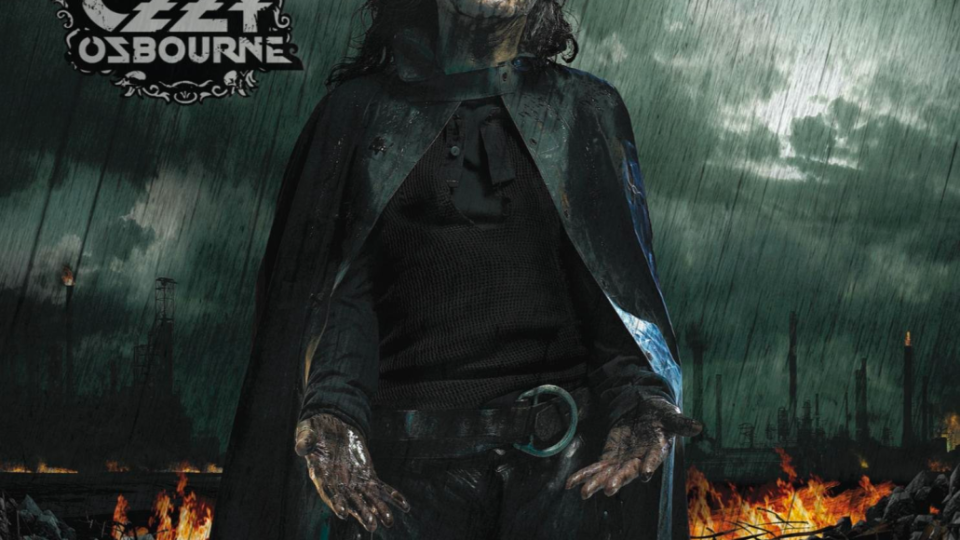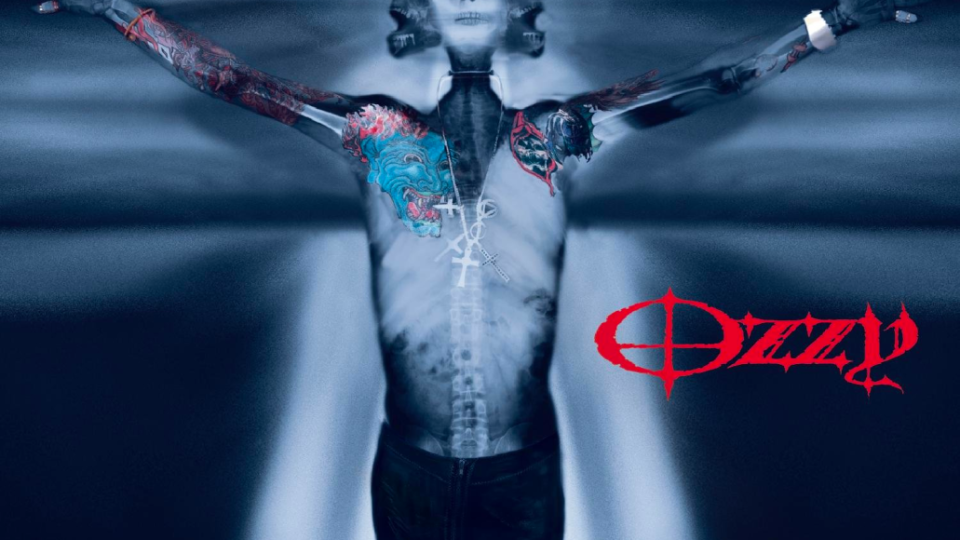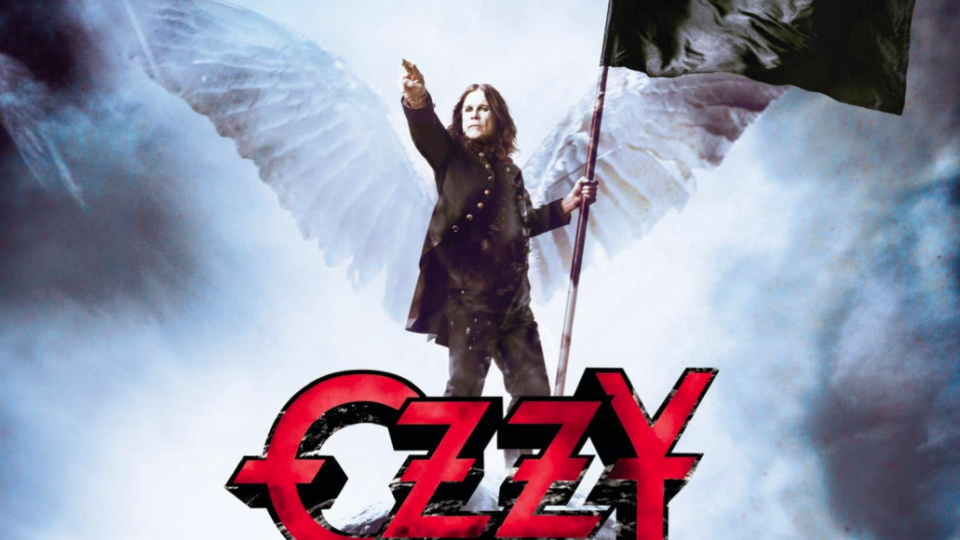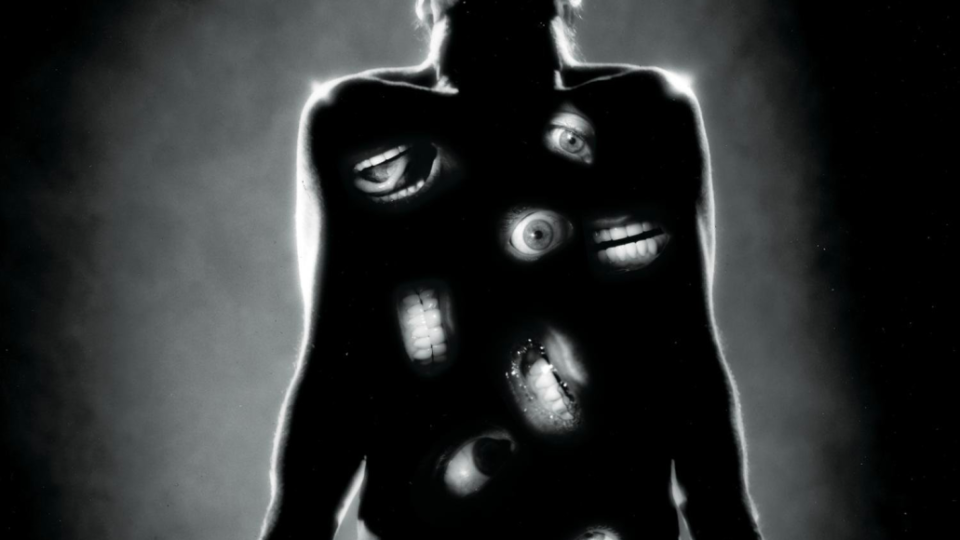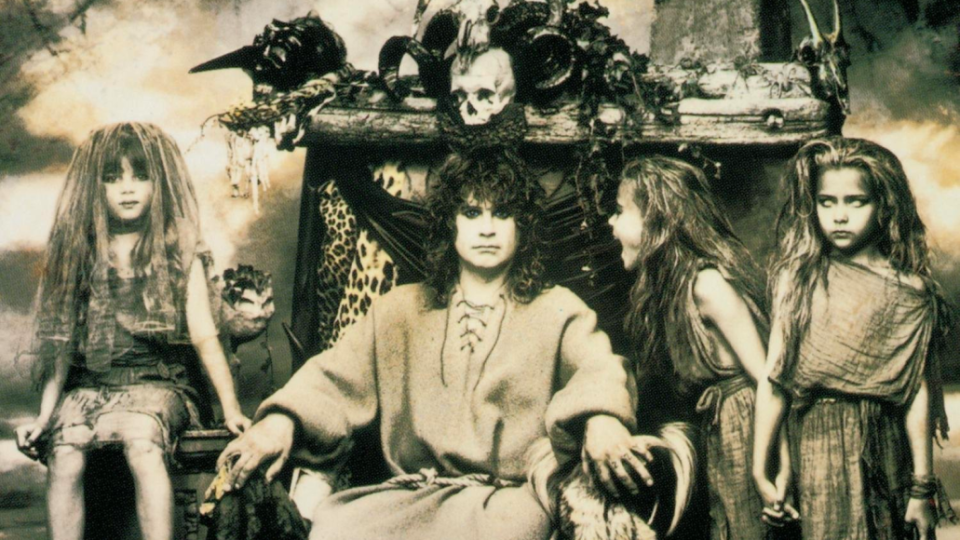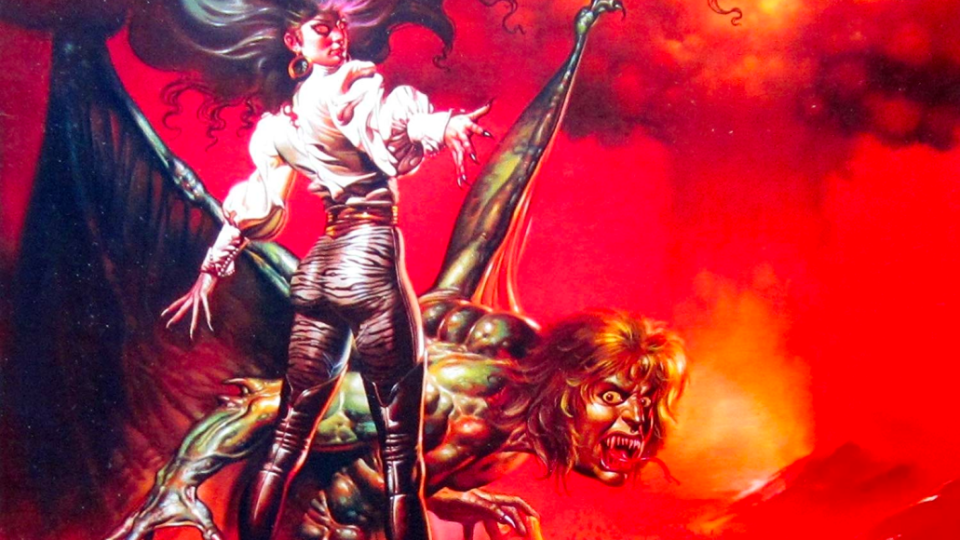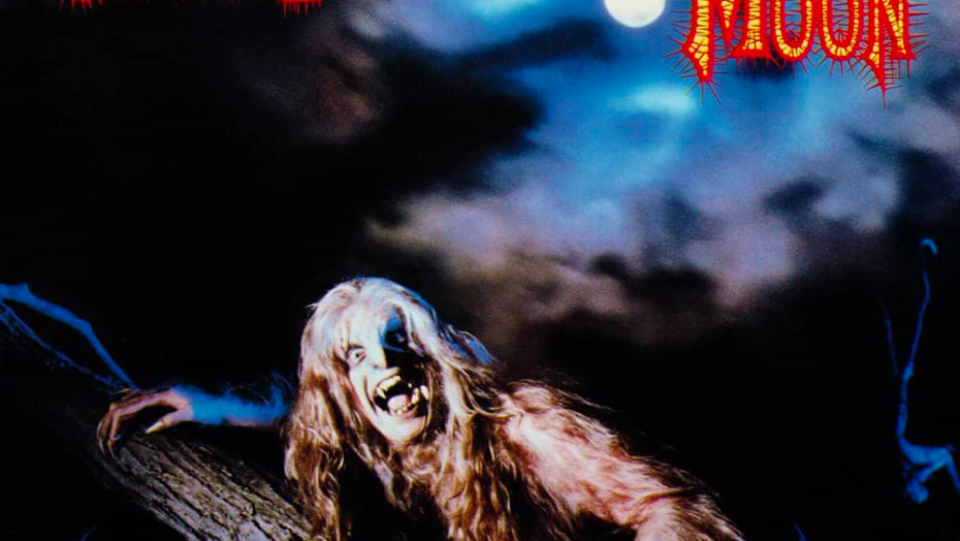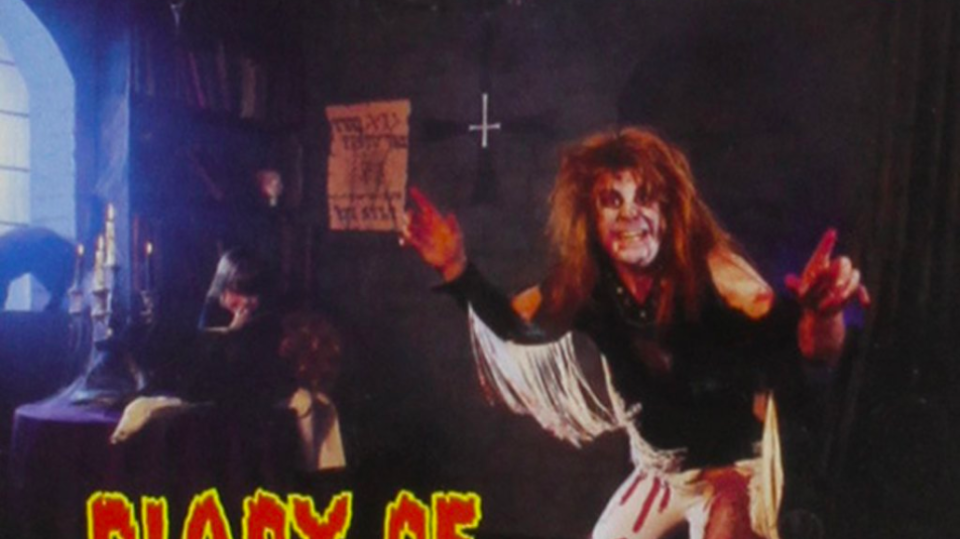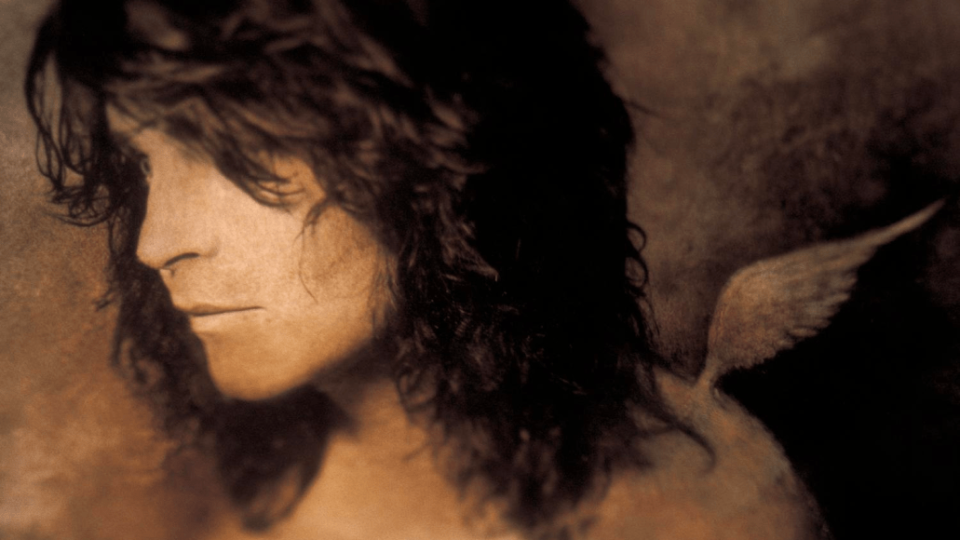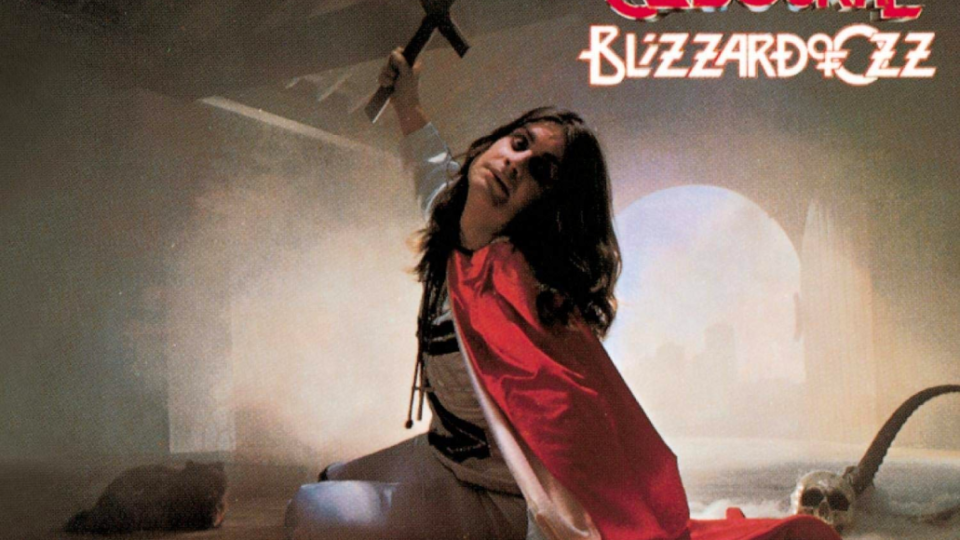Ranking Every Ozzy Osbourne Solo Album from Worst to Best
- Oops!Something went wrong.Please try again later.
- Oops!Something went wrong.Please try again later.
The post Ranking Every Ozzy Osbourne Solo Album from Worst to Best appeared first on Consequence.
Welcome to Dissected, where we disassemble a band’s catalog, a director’s filmography, or some other critical pop-culture collection in the abstract. It’s exact science by way of a few beers. This time, we follow Ozzy Osbourne’s solo career from the masterful Blizzard of Ozz to what, for now, remains his last solo disc, 2022’s Patient Number 9.
The man born John Michael Osbourne in Birmingham, England, on December 3, 1948, didn’t become the Prince of Darkness overnight. First rising to fame as the vocalist for Black Sabbath — the first heavy metal band — Ozzy Osbourne became as notorious for his drinking and drug habits as he was for his singing.
Ozzy hit a turning point in his life when touring with Black Sabbath in 1979. His habit was bad, and maybe worse, every night a young, hotshot band called Van Halen were blowing Black Sabbath off the stage. Ozzy was fired at the end of that tour, and, by most accounts, he was expected to drink himself to death and fade into the annals of rock history.
But that’s not what happened.
Against all odds, Ozzy launched a remarkable solo career. His sound was simple: the horror-movie panache of Sabbath but with the catchiness and flair of Van Halen, seasoned with the provocative antics pioneered by Alice Cooper.
At this point, Ozzy’s almost as famous for the tumult that has surrounded his career as the music itself — things like biting the head off a bat in Des Moines, Iowa; urinating on a statue on the Alamo grounds; or any number of zany moments from reality TV show The Osbournes.
More than 40 years later, despite a myriad of recent health issues that have put his farewell tour on hold, Ozzy continues to put out quality music, continuing his undeniably legendary career.
Behind all the drama, Ozzy has left behind an impressive body of work, one full of exciting songs, but also complete with some misses along the way. Ozzy’s solo career is one of guitar music’s great common spaces, bridging classic rock, glam, progressive rock and traditional heavy metal. Here we deconstruct his 12 studio albums.
— Joseph Schafer,
Heavy Consequence Contributor
Editor’s Note: This list originally ran in 2019 but was updated in 2022 with the addition of Ozzy’s two most recent albums, Ordinary Man and Patient Number 9.
12. Black Rain (2007)
In Between the Ups and Downs (Analysis): For better or worse, Ozzy lives or dies by his lead guitarist, and in 2007, longtime collaborator Zakk Wylde pinch-harmonic’ed his way through Ozzy’s weakest effort. Black Rain sounds like a Black Label Society record, leaning hard on blues scales, mid-tempo groove, and interchangeable riffs. Unfortunately, it bears more resemblance to the Black Label Society that wrote Mafia than the one that wrote “Stillborn” or the underrated The Blessed Hellride album. Mileage on Black Label Society may vary, but Black Rain definitely doesn’t feel like an Ozzy record, and it seems like Osbourne knows as much.
From the cheesy harmonica in the title track to the monotonous rhythms, almost every choice on Black Rain caters to a broad audience and, as a consequence, only really reaches the lowest common denominator.
Don’t Wanna Stop Listening (Best Song): Ozzy has always put his best foot forward where singles are concerned, and, true to form, the radio cut on Black Rain whips. “I Don’t Wanna Stop” still sounds like a Black Label Society song, but has some of the brute force that made “Stillborn” an instant classic. Wylde’s chugging chorus riff and blistering solo make a compelling vehicle for serviceable lyrics about Ozzy’s inability to die — or to stop putting out so-so albums.
Mental Wounds Still Healing (Worst Song): The competition for the last place on Ozzy’s worst solo record is stiff. Why on earth is “The Almighty Dollar” almost seven minutes long? Who told the Prince of Darkness that his fans need another cloying ballad like “Lay Your World on Me” or “Here for You”? However, “Civilize the Universe” trounces both, with an irritating major-key chorus that seems to repeat forever. Oscillating effects soak Wylde’s guitar work like an attempt to cover up this utter lack of a riff. Maybe worse, Ozzy’s perennial flower-child streak pollutes the lyrics with smarmy pap. Less “Civilize the Universe”, more “Symptom of the Universe”, please. — Joseph Schafer
11. Down to Earth (2001)
In Between the Ups and Downs: “I’m not the Antichrist or the Iron Man,” Ozzy yowls one minute into the first song on 2001’s Down to Earth — well, why the hell not? His follow-up to the underrated Ozzmosis album could stand to be more sinister. Instead, it’s unremarkable.
Mid-paced and groovy in the extreme with a hideous photoshopped cover, it’s the Prince of Darkness’ obvious attempt to fit into the alt-metal idiom that dominated rock charts at the turn of the millennium, and which he helped bolster and commodify with the successful first few runs of Ozzfest.
Maybe Ozzfest has something to do with Down to Earth’s blandness; Osbourne had reunited with Black Sabbath twice since Ozzmosis to play the traveling fest and had already begun work on what would become the final Black Sabbath album, 13. Some of his attention had to be elsewhere.
Not for lack of trying, Ozzy recruited former Suicidal Tendencies bassist Robert Trujillo and Faith No More drummer Mike Bordin into his band. For good measure, he enlisted superstar producer and songwriter Tim Palmer — fresh off working with U2 on All That You Can’t Leave Behind — to polish the album. It’s so polished that there’s no edge left on the damn thing, just nu-metal riffs stapled to ’80s hard-rock choruses.
Don’t Wanna Stop Listening: On ”Facing Hell”, Osbourne and Wylde manage to find a little of that old black magic. It’s the only song besides “Black Illusion” that feels like metal proper. An above-average electronic intro gives way to competent chugging from Wylde and some interesting drum fills during the chorus courtesy of Bordin. Osbourne often finds his footing when facing down conservative Christianity, and “Facing Hell” delivers with necromancy and blasphemy.
Mental Wounds Still Healing: Thirty seconds in, “Junkie” sounds like one of the better tracks on Down to Earth. Wylde’s riff is strong, but that’s all the song has going for it. Ozzy phones in an annoying and lazy chorus, and the verses sound a bit too much like Korn to feel like proper Ozzy. Also, like Korn’s worst songs, it never seems to find the right ending. At four-and-a-half minutes long, it feels twice as long. — Joseph Schafer
10. Scream (2010)
In Between the Ups and Downs: Switching guitarists tends to bring the best out of the Prince of Darkness. Though his voice shows its wear on tear on Scream, hotshot axeman Gus G brings out his best performance in a decade.
Born Konstantinos Karamitroudis, Gus G is unique in Ozzy’s discography for two reasons: one, he had a lengthy career before joining forces with Ozzy; two, despite spending eight years in the band, his recorded output only lasted one album.
Gus G’s previous credits at the time included melodic death metal band Nightrage, as well as power metal acts Dream Evil and Firewind — both of which owe some debt to Ozzy’s ’80s output. As such, Gus had a well-developed style that paid homage to Ozzy’s pre-Wylde sound but also had a modern, aggressive edge.
It’s no surprise, then, that for better or worse, Scream modernized Ozzy’s sound in a major way. For better: everything about “Diggin’ Me Down”. For worse: Ozzy almost rapping on “Let it Die”. Unfortunately for Gus, Ozzy’s age shows. He sounds winded and not quite up to the task of taking the compositions over the top. Maybe that’s why, besides the title track, Ozzy performed almost nothing from the record live.
Tellingly, Ozzy allowed Zakk Wylde (not to mention Slash and Tom Morello) to play with his band on the 2012-2015 “Ozzy and Friends” tour. And when Wylde retook his slot as Ozzy’s guitarist in 2017, relegated Scream to cult curiosity status, rather than the beginning of a new era for the Prince of Darkness.
Don’t Wanna Stop Listening: Gus G tries to fit as many ideas as he can into the six minutes of “Diggin’ Me Down” — an acoustic intro, followed by a synthesizer intro, and so on. It takes him a minute and a half to hit the most Tony Iommi-like riff he’s ever written. Chugging palm-muted triplets give the verses an undeniable modern metal sheen. It’s like he and Ozzy tried to shoehorn the entirety of metal history into one ambitious cut.
Mental Wounds Still Healing: The cellos that open “Time” make a little hint at the symphonic power metal that Gus G knows how to play. Ozzy singing over a Rhapsody song would be far preferable to this warmed-over ballad. “Time waits for no one, it’s never what it seems/ Stop waiting for tomorrow/ Stop living in your dreams,” Ozzy pleads, as if the guy who’s been a rock star since he was 21 years old and who has snorted more cocaine than Scarface knows what it’s like to let life pass him by. — Joseph Schafer
09. Ozzmosis (1995)
In Between the Ups and Downs: On the most front-loaded album since his debut, Ozzy opens Ozzmosis with the unstoppable one-two punch of “Perry Mason” and “I Just Want You”. The highlights don’t stop there. “Thunder Underground” rolls like an Abrams tank and “See You on the Other Side” is the rare excellent Ozzy ballad — of course, Lemmy Kilmister of Motörhead helped write it. Ozzy had no business being this good in 1995, maybe the weakest year in metal history.
On the other hand, it’s hard to suck when your backing band includes Rick Wakeman of Yes and Geezer Butler of Black Sabbath. Butler saves this album, and when he and Wylde both do what they do best, Ozzmosis shines. The steam runs out by the end, though, with too few ideas spread out over too-long songs, a trend which has plagued Osbourne since.
Don’t Wanna Stop Listening: Not for the last time, Ozzy puts the best song at the beginning of the album. Anchored by one of Geezer Butler’s finest bass riffs, “Perry Mason” ranks in the top-five songs in Osbourne’s repertoire. Each second feels necessary, from Wakeman’s organ intro to the breakdown that ends it. John Purdell, who co-wrote the title track to No More Tears four years earlier, returned with lyrics about … a 1960s prime-time drama about a lawyer? Somehow, Ozzy sells it. Too bad he seldom performs this song — it belongs in every set.
Mental Wounds Still Healing: A cheesy sitar hook? Gross. A song about how much Ozzy loves his son? Even grosser. The wimpy synth-focused ballad “My Little Man” can’t even tread water. Ozzy’s love of ’60s psychedelia is well-documented and brings out his worst instincts as a songwriter — “The Age of Aquarius” this ain’t. Every chord change and drum fill feels like it’s been done before and better. Osbourne’s too-earnest sentimentality robs this tune of any power it might have otherwise had. — Joseph Schafer
08. Ordinary Man (2020)
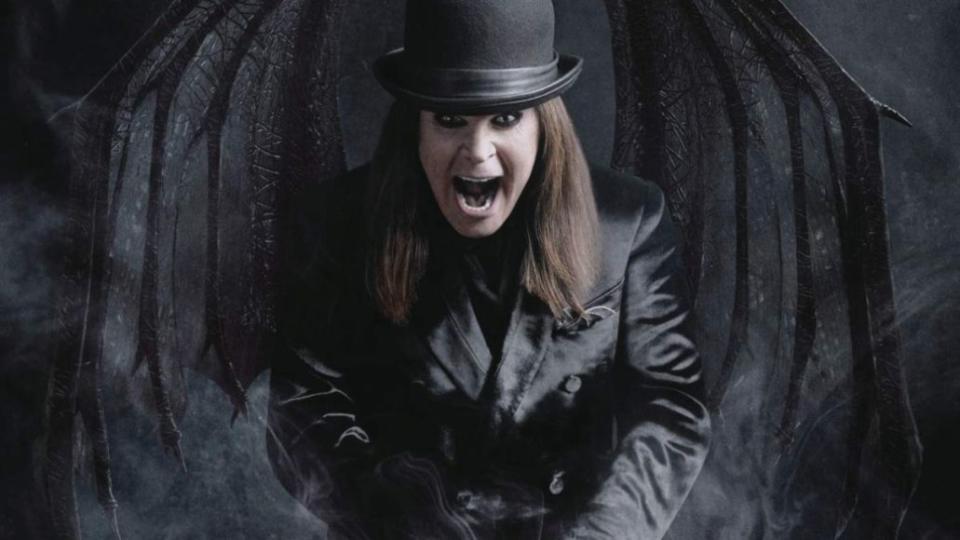
In Between the Ups and Downs: Ordinary Man was born out of an unlikely collaboration between Ozzy and rapper Post Malone on the latter’s 2019 hit “Take What You Want.” The track was a major success for both, debuting at No. 9 on the Billboard Hot 100 — Ozzy’s first placement in the top 10 in over 30 years. The experience must have been particularly rewarding, as Ozzy would tap Post Malone’s producer Andrew Watt for what would become Ordinary Man.
The LP came together surprisingly fast considering “Take What You Want” was released in October 2019 and Ordinary Man dropped in February 2020. Ozzy was also battling numerous health ailments in 2019 — what he called the “worst fucking year” of his life — beginning with a bout with pneumonia. He then suffered a serious fall at home, forcing him to postpone all of his 2019 tour dates. On top of all that, he had been battling Parkinson’s disease the entire time, revealing in early 2020 that he had been diagnosed with the condition in 2003.
Making Ordinary Man served as a necessary distraction, with Ozzy filling the studio with guest stars and musical colleagues: Guns N’ Roses bassist Duff McKagan, Red Hot Chili Peppers drummer Chad Smith, Post Malone, Elton John, Slash, and Tom Morello. Although the album’s quick turnaround resulted in an unbalanced and hodgepodge-y final tracklist, the personal nature of the record and Ozzy’s humbling, personal lyrics still shine through. While not his greatest musical achievement, the record has a symbolic importance — one of triumph and perseverance. If anything, it would serve to inform Ozzy and Watt’s significantly stronger second pass: 2022’s Patient Number 9.
Don’t Wanna Stop Listening: “Under the Graveyard” was chosen as the lead single and exemplifies the Ozzy x Watt sound. There’s some overtly pop elements at work here (particularly on the vocal effects and reverb) that might perturb someone looking for old-school Black Sabbath. But it’s still a chunky rock song at heart, structured around beefy riffs and melodies. Lyrically, Ozzy bares it all: “Today I woke up and I hate myself / Death doesn’t answer when I cry for help.” Damn…
Mental Wounds Still Healing: It’s fun that Ozzy and Post Malone collaborated once more for Ordinary Man. Unfortunately, the resulting track is a dud. Rather than leaning on Malone’s pop-rap sound, Watt steered “It’s a Raid” more toward punk, which isn’t necessarily a style suited for Ozzy or Malone. The song’s animated music video is a blast, but the track is a failed pastiche on its own. — Jon Hadusek
07. No Rest for the Wicked (1988)
In Between the Ups and Downs: Zakk Wylde’s first album as Ozzy’s guitarist is also one of his best, in part because it doesn’t always sound like his signature style. Sure, his ever-present pinch harmonics pepper the album, but these compositions hew closely to the template that Randy Rhoads innovated, if a little heavier and more aggressive — Wylde was 21 when the album was released and maybe hadn’t quite come into his own yet. The return of bassist and lyricist Bob Daisley meant No Rest for the Wicked was always going to sound in line with the Rhoads records, as well.
Early recording sessions with Queen producer Roy Thomas Baker didn’t produce results. Baker left after Wylde asked to re-record all of his guitar parts, leaving Fleetwood Mac producer Keith Olsen to pick up the pieces. Olsen helped Wylde find his tone, but did not rescue Osbourne’s voice. Ozzy sounds worse for the wear — reverb coats his voice, and the lyrics don’t give him a lot to work except for opener “Miracle Man”, a diss track aimed at his heretofore heckling critic, televangelist Jimmy Swaggart.
Maybe because Wylde improved so much on the subsequent tour — playing Black Sabbath songs with Geezer Butler every night will do that — No Rest for the Wicked is a somewhat forgotten album in Ozzy’s discography. He seldom plays songs from it, though he’s been known to break out the moody-but-overlong ballad “Fire in the Sky”.
Don’t Wanna Stop Listening: Wylde found his squealing, stomping pentatonic scale attack for the first time on “Breakin’ All the Rules”. Moody, brooding, and muscular at once, it’s a taste of the greatness that he and Osbourne would achieve a few years later on No More Tears. Wylde even delivers the second vocal hook during the song’s churning outro.
Mental Wounds Still Healing: The Ozzman’s substance abuse is the stuff of legend. Rather than play coy, Osbourne’s never been shy about discussing the ills of drink and drugs but maybe should have cut it out after Sabbath’s “Snowblind” because “Demon Alcohol” tastes like pruno. When Ozzy speak-sings “I’ll get you!” like a mischievous gnome, it’s got to be the single least-threatening vocal take the Prince of Darkness has ever laid down. — Joseph Schafer
06. The Ultimate Sin (1986)
In Between the Ups and Downs: A newly-sober Ozzy walked into a minefield of contentious behavior and personnel changes for his second album with lead guitarist Jake E. Lee. The shredder, who received no royalties or writing credits for Bark at the Moon, wrote the lion’s share of The Ultimate Sin — originally titled Killer of Giants — while the Ozzman temporary kicked his various habits in rehab and refused to hand any of it over unless he was paid royalties.
Drummer Jimmy DeGrasso and bassist Bob Daisley both cut demos for the album and were fired before recording began. Daisley would be missed, but his replacement, Phil Soussan, co-wrote the album’s instant-classic single, “Shot in the Dark”. Naturally, he wound up in a legal dispute with Osbourne over an accounting dispute, never to return. Lee saw The Ultimate Sin through to the end and played on its support tours before getting the ax from Sharon Osbourne via telegram, which may be for the best since, although respectable, his work here is a step down from Bark at the Moon.
Osbourne has all but disavowed this album’s existence, maybe due to its tumultuous writing and recording process, but there are other factors, as well. He’s said in interviews that he was never happy with producer Ron Nevison’s end product. The truth is, The Ultimate Sin was doomed from the start — Lee’s style sounded outmoded in 1986, the same year that Metallica’s Master of Puppets and Slayer’s Reign in Blood brought thrash to the masses. Metallica opened for Ozzy while he toured in support of the album, and, by all accounts, they mopped the floor with him at each date.
Don’t Wanna Stop Listening: For some reason, the lead single — and best song — comes tacked on at the end of The Ultimate Sin. That all said, the wait is well worth it to hear “Shot in the Dark”. Soussan wrote the song for his previous band, Wildfire, which played a much more radio-friendly style than Osbourne’s band. While “Shot in the Dark” still sounds metallic, the track’s AOR origins show in its guaranteed-to-get-stuck-in-your-head chorus.
Mental Wounds Still Healing: Nuclear paranoia is the overarching theme of The Ultimate Sin. It’s no new topic to Ozzy, a former hippie with a well-documented peacenik streak. On “Thank God for the Bomb”, Osbourne’s desire for a nuke-free future becomes less of a subtext and more of a text-text. He ought to have remembered: metalheads hate the moral majority. Getting preached at by the Prince of Darkness is no fun, it turns out. — Joseph Schafer
05. Patient Number 9 (2022)
In Between the Ups and Downs: Ozzy would reunite with producer Andrew Watt for Patient Number 9 — another guest-filled offering and a marked improvement over 2020’s Ordinary Man. It was mere weeks after the release of the aforementioned album that Ozzy revealed that he and Watt were already set to work on the follow-up. In a sense, working together had been therapeutic as Ozzy battled health ailments throughout 2019. This time there were further health issues and a pandemic to navigate.
Osbourne was the first to admit that he would be “fucked” if he contracted COVID-19 (he would later test positive and recover), and he and Watt would wear masks in the studio, taking daily tests before beginning the days’ work. Things came together a much slower pace this time around.
“It’s taken a little longer this time,” Watt said in December 2020, “but it’s cool because the last one was made in this, like, swift love affair of passion, like, ‘Oh my God, this is incredible!’”
That extra time benefitted the songs, which sound heavier and more thought-out on Patient Number 9. There’s also another A-list cast of renowned rockers who contributed to the album: guitar legends Jeff Beck, Eric Clapton, and Black Sabbath’s Tony Iommi, plus longtime collaborator Zakk Wylde, along with Pearl Jam’s Mike McCready, Metallica’s Robert Trujillo, Red Hot Chili Peppers’ Chad Smith, Guns N’ Roses’ Duff McKagan, and late Foo Fighters drummer Taylor Hawkins.
Don’t Wanna Stop Listening: Ozzy and Iommi, together again — as it should be. A landmark track in the Ozzman’s discography, “Degradation Rules” marks the first collaboration between the two since Black Sabbath’s last album 13. Both legends rose to the occasion, bringing stellar performances that make us pine for a full-fledge reunion. One of the best parts of Patient Number 9 is how well all the star guitarists are utilized on each song. That doesn’t stop us from secretly wishing Iommi had recorded every part. The tone, the nostalgia — this one delivers on its top billing.
Mental Wounds Still Healing: Eric Clapton sorta noodles over the main arrangement on “One of Those Days,” reminding you that he’s there while contributing little substance to a song that’s way outside his wheelhouse. An otherwise catchy hard rocker, Clapton just doesn’t sound at home here, almost like he’s phoning in a favor for his fellow rock legend. We’re all for some throwback Cream wah-wah, but it falls awkwardly into the mix. To top it off, Clapton objected to a phrase in the song’s chorus (“One of those days that I don’t believe in Jesus”). Maybe his heart just wasn’t in it. It’s one of the only songs on Patient Number 9 that isn’t improved by its all-star guest spot. — Jon Hadusek
04. Bark at the Moon (1983)
In Between the Ups and Downs: It’s a miracle that Bark at the Moon even exists, let alone that it’s as good as it is. Ozzy was at his most raucous during the Diary of a Madman tour in 1982, and by many accounts his drinking at the time was untenable — this was when he bit the head off of a bat and urinated on the Alamo grounds, all just before lead guitarist Randy Rhoads died in a freak plane accident on March 18. In the subsequent turmoil, bassist Rudy Sarzo split to rejoin UFO. Ian Gillan’s guitarist Bernie Torme and Night Ranger’s Brad Gillis both filled in on guitar, but neither wanted to work on the third solo Ozzy record. For a minute, Dokken’s George Lynch was in consideration for the lead spot, but lost out to a leather-clad newcomer.
Enter guitarist Jake E. Lee, a San Diego native who played early on in Ratt, as well as the criminally underrated Rough Cutt — he was almost added to Motley Crue, as well. Lee and bassist Bob Daisley together wrote almost all of Bark at the Moon while an inebriated Ozzy stood at the sidelines. Neither of them received any writing credits, to their mutual dismay.
For all the issues with Jake E. Lee’s songs on The Ultimate Sin, his work on Bark at the Moon is stellar. Lee managed to maintain the pop-metal sound that Rhoads innovated while also expanding on the brooding drama that flavored Diary of a Madman. At the same time, it sounds as though Lee was abreast of what Black Sabbath had been doing with Dio since Ozzy’s departure. The driving riffs and fast tempo that Lee works in on songs like “Rock ‘n’ Roll Rebel” and “Now You See it (Now You Don’t)” make Bark at the Moon the “truest” metal record in Osbourne’s solo career. King Diamond’s solo work, Ghost’s masked melodrama, and every power metal band with a hint of darkness all owe some debt to Bark at the Moon.
Don’t Wanna Stop Listening: Lee and Daisley may have been cheated out of their credits and publishing, but “Bark at the Moon” remains a high-water mark for them both — their playing is frenetic, expressive, and memorable. It’s so lovable that it was a radio hit in Reagan’s uptight America despite having maybe Ozzy’s most blasphemous lyrics. “Howling in shadows, living in a lunar spell/ He finds his heaven spewing from the mouth of hell,” Ozzy howls. The Norwegian black metal bands, then teenagers, were taking notes.
Mental Wounds Still Healing: Ballads — Ozzy isn’t great at them. Sure, some of his best tunes are melodramatic karaoke classics like “Mama, I’m Coming Home” or his suicidal duet with Lita Ford, “Close My Eyes Forever”. Those, however, are outliers. More often, Ozzy bleats out a clunker like “So Tired” — four minutes of yelps, canned strings, and unremarkable piano playing. Lee can barely get a solo in edgewise. Osbourne would have been better off taking a nap than spending his time on this stinker. — Joseph Schafer
03. Diary of a Madman (1981)
In Between the Ups and Downs: Randy Rhoads recorded the final statement of his remarkable and tragically short career, Diary of a Madman, in a flash. The entire record, written by Rhoads along with bassist Bob Daisley and drummer Lee Kerslake, was recorded in less than a month, cobbled together from leftover takes from Blizzard of Ozz, as well as material written on the road. These tribulations make the end product even more remarkable. More subtle and dramatic than its predecessor, Diary of a Madman is a triumph.
Like its predecessor, Diary explodes out of the gate with a pair of instant classics. “Over the Mountain” and “Flying High Again” show Rhoads at his most potent. Both songs, alongside the proggy “You Can’t Kill Rock and Roll”, were hit singles. Unlike its predecessor, though, Diary ditches many of the ballads in favor of more subtle songs, most notably its title track, the crown jewel in Ozzy’s solo discography.
Ozzy himself is the weakest link. Not for the last time, his voice sounds strained, and many of the songs presented a challenge for his upper register. However, at times his nervy performance is harrowing and underscores the album’s paranoid undertone.
Unfortunately, Osbourne’s voice wasn’t the only thing strained while making Diary. Daisley and Kerslake both exited the band and were not credited on the album — Rudy Sarzo and Tommy Aldridge, respectfully, received the credit.
If Kerslake and Daisley had been able to continue with Ozzy, and if Rhoads had survived, this list might look very different. For all their disagreements, the quartet made a potent team, one which produced two must-listens and likely had more gas in the tank. As it stands, Diary of a Madman closes the book on the first incarnation of Ozzy’s band in stunning fashion.
Don’t Wanna Stop Listening: There’s no contest here. The title track to Diary of a Madman is Ozzy’s finest recorded moment outside of Black Sabbath. A miniature rock opera, the tune opens with an acoustic intro and crawls into an explosion as good as anything Andrew Lloyd Webber ever wrote. Ozzy sings like he’s about to go into withdrawal at any second, which serves the song — there’s a parallel to what Peter Murphy was doing with Bauhaus at the same time, here. Just after the four-minute mark, Rhoads whips out the best riff of his whole career and plays it only twice — a tease for metalheads, just like the rest of his too-short career.
Mental Wounds Still Healing: Diary of a Madman starts with a bang and keeps delivering. Once the trio of opening singles end, “Believer” and “Little Dolls” keep the engine humming. And then “Tonight” brings the momentum to a screeching halt. For what it’s worth, as far as Ozzy ballads go, this one isn’t terrible — Rhoads’ solo burns like a roadside flare — but the strength of Diary lies in how it stripped the fat from its predecessor. Skip this one, go straight to “S.A.T.O.” and keep the crazy train rollin’. — Joseph Schafer
02. No More Tears (1991)
In Between the Ups and Downs: Forgive all of Zakk Wylde’s transgressions for the sake of No More Tears. His sophomore album with Ozzy Osbourne is a confident masterpiece every bit as bold as the Randy Rhoads albums, in part because, for the first time in a decade, the band doesn’t sound like they’re trying to write Diary a second time.
This time around, Ozzy enlisted a ringer — Motörhead’s Lemmy Kilmister co-wrote three of the best tracks on the record. One of them, “Hellraiser”, was so good that he even re-recorded it with Motörhead. But Kilmister’s biggest contribution is “Mama, I’m Coming Home”, the rare example of a brilliant Ozzy ballad. “Mama” peaked at #28 on the Billboard Top 100 and contributed to the album’s quadruple-platinum certification. Rumor has it the proceeds from “Mama” kept Motörhead liquid during the rest of the ’90s.
But there’s so much more to No More Tears than the singles. “Desire” and “Won’t Be Coming Home (S.I.N.)” could have been radio hits on their own. “Zombie Stomp” presaged all of Rob Zombie’s solo career. Opener “Mr. Tinkertrain” is Ozzy at his most appalling, singing an innuendo-filled barnstormer from a pedophile’s point of view. Almost 30 years later, it’s maybe the most shocking song Ozzy ever sang, full stop. It would be better off forgotten if the tune itself weren’t so darn good.
Ozzy hasn’t been as good since. Longtime bassist and lyricist Bob Daisley left halfway through the following “Theatre of Madness” tour. Drummer Randy Castillo played on the pursuant “No More Tours” trek, which, at the time, was meant to be Ozzy’s last. By the time Ozzy decided retirement sucks — and found out he didn’t have multiple sclerosis — Castillo was through recording with him. As such, No More Tears is the mid-point of Ozzy’s career and the last shining moment of his golden era.
Don’t Wanna Stop Listening: Outside songwriters pretty much make No More Tears the blockbuster it is. That also goes for the title track. Future Alice in Chains bassist Mike Inez and producer John Purdell helped make “No More Tears”, with its indelible bass line and moody keyboard bridge, another instant hit. More notably, it was a successful song indebted to both glam metal and prog rock released the same year as Nirvana’s Nevermind. “Mama, I’m Coming Home”, a more straightforward track, is a close second.
Mental Wounds Still Healing: You know from the country-friendly intro that “AVH” is going to be cheesy. Wylde delivers an energetic verse riff, but Ozzy can’t match his intensity on the chorus. “Riding on a train that I can’t control,” he sings, multi-tracked a few times to fill out his voice and making his second “Crazy Train” shout-out on the album (the first is on “Desire”). Wylde’s solo is impressive, though, and on any other post-’80s Ozzy record, this would be a standout, but No More Tears has better songs in store. — Joseph Schafer
01. Blizzard of Ozz (1980)
In Between the Ups and Downs: In 1979, Ozzy Osbourne was a mess. The singer had just been sacked from Black Sabbath and was holed up in Los Angeles, hell-bent on spending his £96,000 severance on booze and coke — the use of which had gotten him booted from Sabbath in the first place.
One year later, Ozzy was a star again. His first solo album, Blizzard of Ozz, was a hit. What happened in that year?
Sharon Arden happened. The daughter of record mogul Don Arden, Sharon flew to LA, became Ozzy’s manager (and later wife), and helped the Prince of Darkness form a new project. They enlisted former Uriah Heep members Lee Kerslake and Bob Daisley. After failing to court former Thin Lizzy and G-force guitarist Gary Moore, Ozzy received a tip from friend Dana Sturm: check out Randy Rhoads, the guitarist from Quiet Riot — a young, energetic, and virtuoso axeman. Ozzy asked him to audition and hired him after just hearing his warm-up exercises, according to his memoir, I Am Ozzy.
The band, originally named Blizzard of Ozz, produced their debut album in a month at Ridge Farm studio in Rusper, England. When producer Chris Tsangarides did not create results the band liked, they promoted his engineer, Max Norman. Together, they cut a slice of metal magic: eight songs and one guitar solo that at once paid homage to the hard rock of the ’70s but moved the genre forward into a commercial — but still dark — direction.
When the album was released with Ozzy’s name in a bigger font than the band name, Blizzard of Ozz became the first, and greatest, installment of Ozzy’s solo career. Powered by the unstoppable single “Crazy Train” as well as moody ballads like “Goodbye to Romance” and “Revelation (Mother Earth)”, the album has since gone quadruple platinum.
Kerslake and Daisley didn’t see much return on their time investment and sued Ozzy for unpaid royalties in 1986. Adding insult to injury, Ozzy had Rob Trujillo and Mike Bordin re-record their parts for the album’s 2002 reissue. Subsequently, this metal classic has been returned to its original form.
Don’t Wanna Stop Listening: When it comes to controversial pop-culture icons, Ozzy related with the celebrated occultist Aleister Crowley. Naturally, the Ozzman paid tribute to the amorous magician on “Mr. Crowley”, the most unsettling and moody song from Blizzard of Ozz. Ozzy moans some of his wittiest lyrics here — the line ”Won’t you ride my white horse?/ It’s symbolic, of course” pays homage to the horsemen of the apocalypse as well as Ozzy’s coke habit with a wink and a nudge.
Mental Wounds Still Healing: “No Bone Movies” isn’t a bad song, but it just might be the least original composition on Blizzard of Ozz. Sure, it’s more essential than “Dee”, but as a guitar solo excerpted (a common practice at the time) that’s an unfair comparison. Even the likewise forgotten “Steal Away (The Night)” has more ferocity. Rhoads shreds over the back half of the song, but his soloing is undercut by an obnoxious gang-shout chorus. — Joseph Schafer
Ranking Every Ozzy Osbourne Solo Album from Worst to Best
Joseph Schafer and Jon Hadusek
Popular Posts
Dave Grohl and Jack Black Cover Rush's "The Spirit of Radio": Watch
Morrissey Announces Label Split, Says Miley Cyrus Wants Off His New Album
Dave Coulier Recalls Hearing Alanis Morissette's "You Oughta Know" for First Time
Everyone Is Older but the Basement Is the Same in That '90s Show Trailer: Watch
